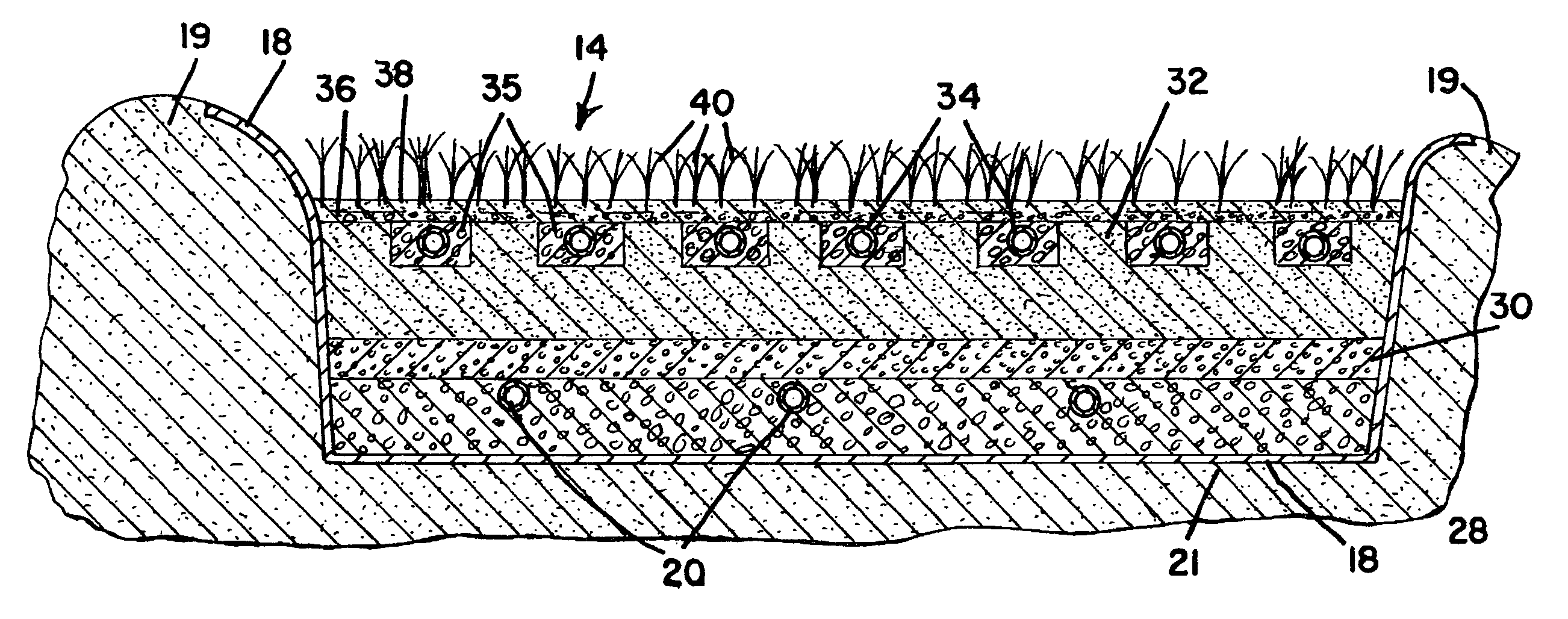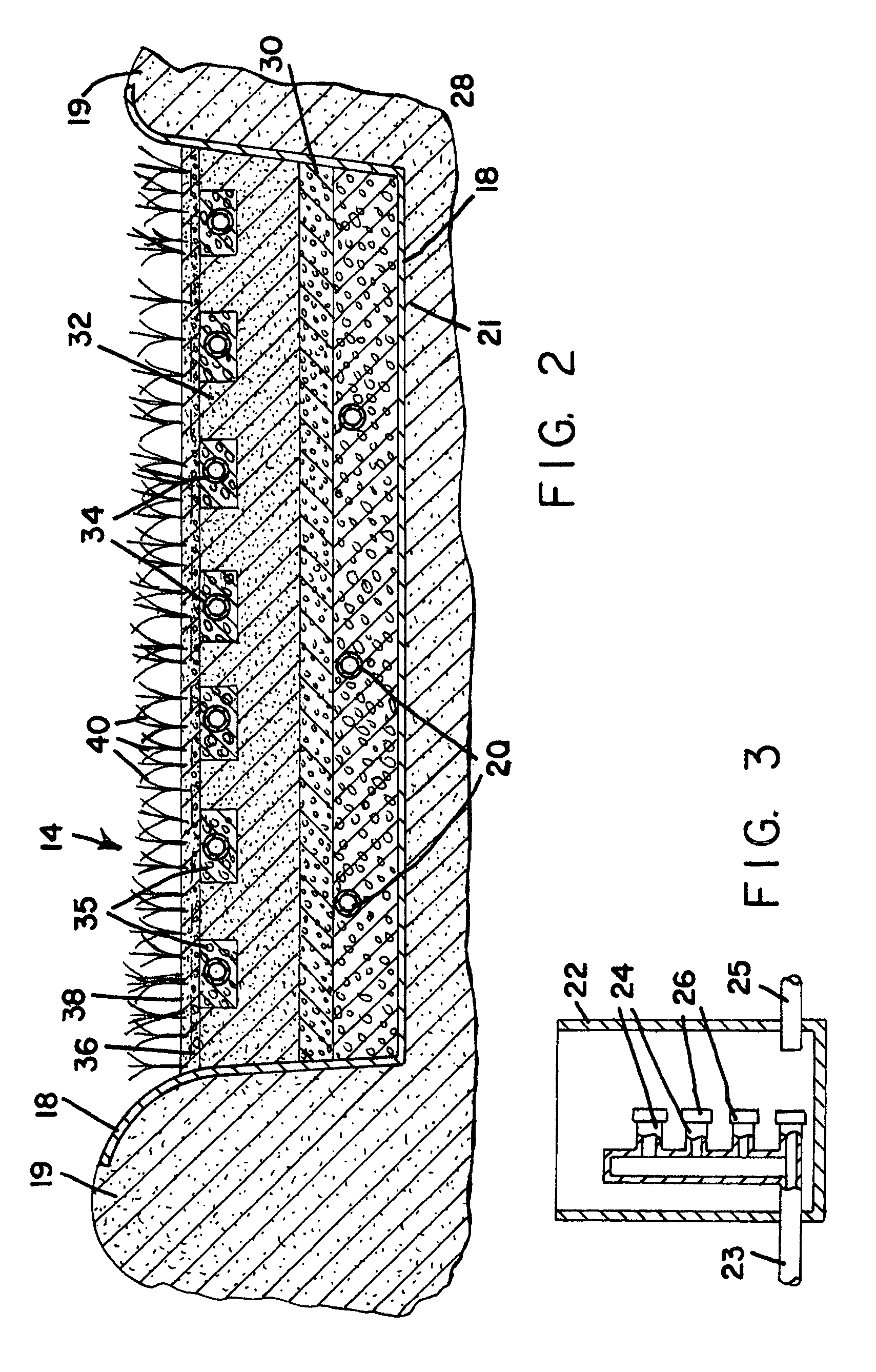Top loading vertical flow submerged bed wastewater treatment system
a wastewater treatment system and vertical flow technology, applied in water treatment multi-stage treatment, water treatment water nature, separation process, etc., can solve the problems of reducing increasing the cost of operating the treatment system, and affecting the efficiency of the system
- Summary
- Abstract
- Description
- Claims
- Application Information
AI Technical Summary
Benefits of technology
Problems solved by technology
Method used
Image
Examples
Embodiment Construction
[0022]Referring to FIGS. 1 and 2, the wastewater treatment system of the present invention, generally indicated by the reference numeral 10, is shown as having a wastewater supply source which may be in the form of a settling tank or storage container such as tanks 12. Treatment units or beds, generally indicated by the reference numerals 14 and 16, are operatively connected to the tanks 12 by an inflow control device, generally indicated by the reference numeral 17. Each treatment unit14 and 16 is comprised of a natural or synthetic liner 18 which fits the contour of a depression in perimeter dikes 19 and treatment unit bottom 21. Inside the liner is a system of perforated collection pipes 20 that conducts the treated effluent to a control box 22 via a connecting pipe 23, see FIG. 3. The control box 22 contains a “tower” of vertically spaced overflow T's 24 with caps 26 that can be used to control the level of water within the treatment unit 14 and constitutes a first outflow contr...
PUM
| Property | Measurement | Unit |
|---|---|---|
| diameter | aaaaa | aaaaa |
| diameter | aaaaa | aaaaa |
| vertical thickness | aaaaa | aaaaa |
Abstract
Description
Claims
Application Information
 Login to View More
Login to View More - R&D
- Intellectual Property
- Life Sciences
- Materials
- Tech Scout
- Unparalleled Data Quality
- Higher Quality Content
- 60% Fewer Hallucinations
Browse by: Latest US Patents, China's latest patents, Technical Efficacy Thesaurus, Application Domain, Technology Topic, Popular Technical Reports.
© 2025 PatSnap. All rights reserved.Legal|Privacy policy|Modern Slavery Act Transparency Statement|Sitemap|About US| Contact US: help@patsnap.com



